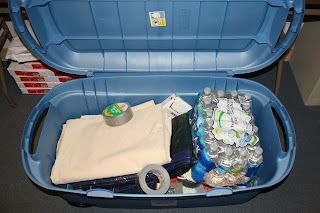I’ve
posted previously about the display my museum maintains out at Ft.
Detrick. I’m told that the most recent one
on Civil War medicines was a big hit! Last
week it was time to change the display though.
The new topic I was given was women in the Civil War.
 |
| Here’s my destination – Fort Detrick. |
I chose
the title “Women in the Civil War Served….”
and then chose four areas of service to highlight - as Doctors, as Nurses,
as Soldiers, and at Home. I did a little
research and wrote some informational labels.
That was the easy part though! The
challenge was finding artifacts which represented each area, and which were
small enough to fit inside the case.
This is a museum about Civil War medicine, so the artifacts I have are
mostly medical in nature. I did find
some appropriate items, and then supplemented with some images. It is the strategy I have used previously for
this display, and it has been successful so far.
Unfortunately, I could not find a suitable artifact to represent the few
women who served as doctors in the Civil War.
I was able to copy a photograph of Dr. Mary Edwards Walker, who was the
first female surgeon in the U.S. Army.
Initially she was only allowed to serve as a nurse, but in 1864 she was
finally commissioned as an Assistant Surgeon with the 52nd Ohio
Infantry. She was captured while
treating a Confederate soldier on the battlefield and spent four months in a
Confederate prison. After the war, she
was awarded the Medal of Honor for her service.
She is the only woman who has ever been awarded this medal.
Many more
women were able to serve as nurses, even though prior to the Civil War nursing
was not regarded as a profession for women.
Previously, hospital nurses were either family members of the soldiers
or fellow soldiers who were recuperating in the hospital. During the war the desperate need for nurses
was filled by women who wanted to help.
They prepared and served meals, administered medicines, changed
bandages, linens and bedpans, read to the soldiers, conversed with them, and
wrote letters home for them. Many times for
the soldiers the nurses took on the roles of their mothers, daughters, or
sisters. The Civil War
was the beginning of the profession of nursing for women.
 |
It was easier to find items to represent the women who served as nurses. I used a copy of a Harper’s Weekly illustration of a nurse tending to a wounded soldier, a ceramic invalid feeder which was used to feed liquids to patients, and a book on Civil War nurses titled “Our Army Nurses”.
The photo at the far left is of Dr. Mary Edwards Walker, wearing her Medal of Honor.
|
It might surprise you to learn that some women served as soldiers in the Civil War. Civil War recruits were required to undergo a physical examination before enlisting. However, many times the exams were not very thorough, and recruiters did not ask for proof of identity. As a result, at least 400 women were able to enlist and to serve in the Civil War. Patriotism was a motive for many of them. Some women enlisted to remain close to their husbands or brothers, some wanted to experience the adventure of going to war, and some were enticed by the bounties paid to recruits.
Women who enlisted as men bound their breasts when necessary, padded the waists of their trousers, cut their hair short, and tried to fit in with the men in their units. Some were discovered and sent home. There is an account of one woman soldier being discovered when she gave birth! Others were discovered after being killed or wounded. Of course it is likely that a number of women served as soldiers and were never detected.
 |
The photo on the left is of “Franklin Thompson”, the alias of Sarah Edmonds (on right).Sarah enlisted as a private in the 2ndMichigan Infantry in 1861 and served for two years.Her regiment took part in the Peninsula campaign and the battles of First Manassas, Fredericksburg, and Antietam.After the war she received a government pension for her military service. A letter from the secretary of war acknowledged her as "a female soldier who . . . served as a private . . . rendering faithful service in the ranks."
Photo taken from the blog, Soldier-Women of the American Civil War. |
The women
left at home also supported the war and the soldiers. Just as they do today, the mothers, wives,
sweethearts, sisters, and daughters back home did whatever they could to help
the soldiers. They kept the family farms
and businesses running; wrote letters; made shirts, gloves, and socks for the
soldiers; baked and canned foods; and sent packages of food, clothing, and
personal items. They made bandages and
quilts for the wounded soldiers in the hospitals. They also formed groups like the Sick
Soldier's Relief Society and the Soldier's Aid Society, which raised money to
help the soldiers.
 |
Soldiers did not always trust the medicines prescribed by the army doctors. Many times they would have their familiar home remedies or patent medicines sent to them by their wives or mothers.
Thedford’s Black Draught was used as a laxative.
|
 |
| Many soldiers carried photographs of their loved ones. This small daguerreotype is a portrait of Catharine Bell Kay, the wife of Surgeon Isaac F. Kay of the 110th Pennsylvania Infantry. |
Enjoy the upcoming Memorial Day weekend, and please take some time to remember the men and women who have given their lives for our country.
Photos courtesy of the National Museum of
Civil War Medicine, except where otherwise noted.
































